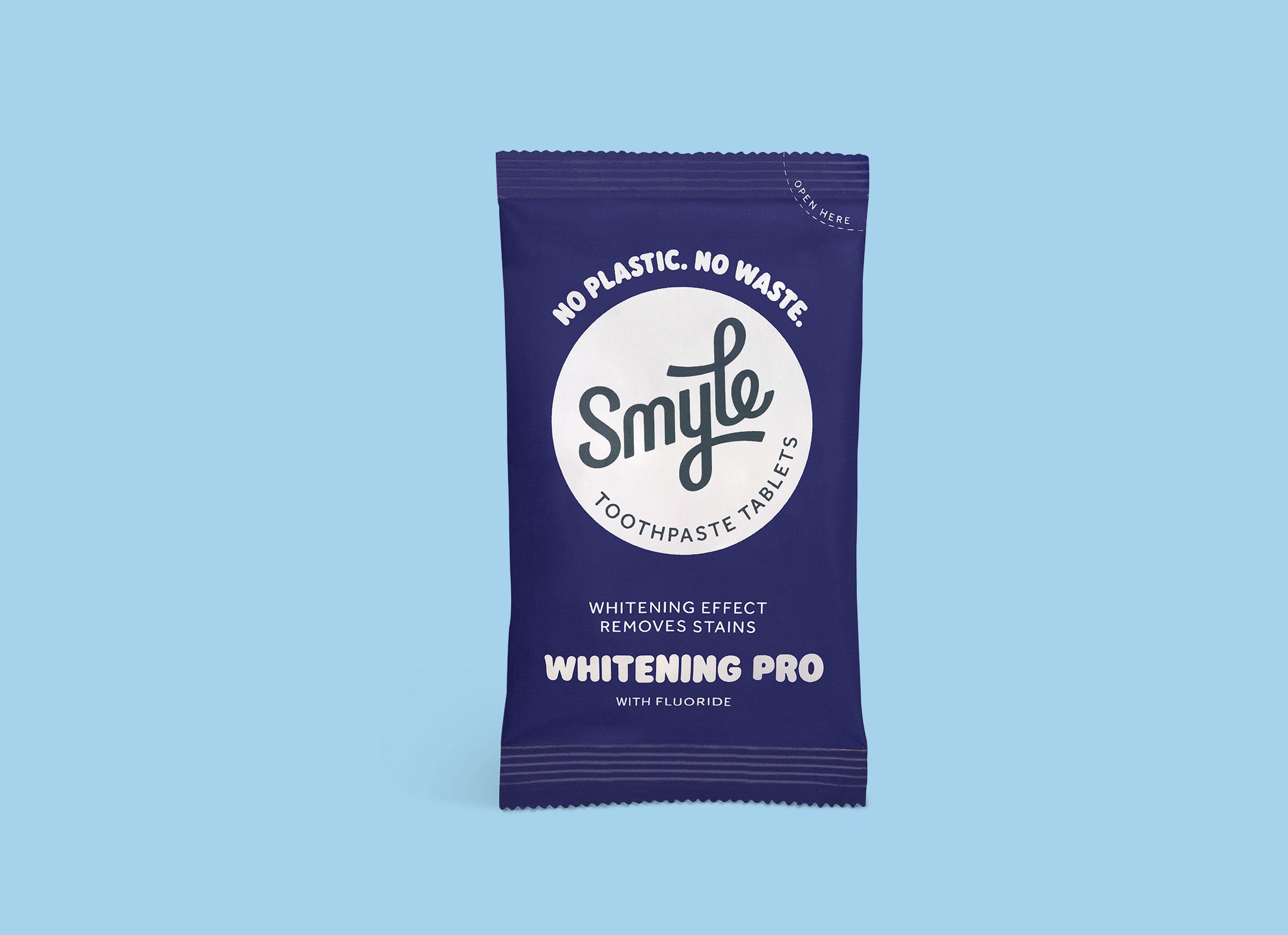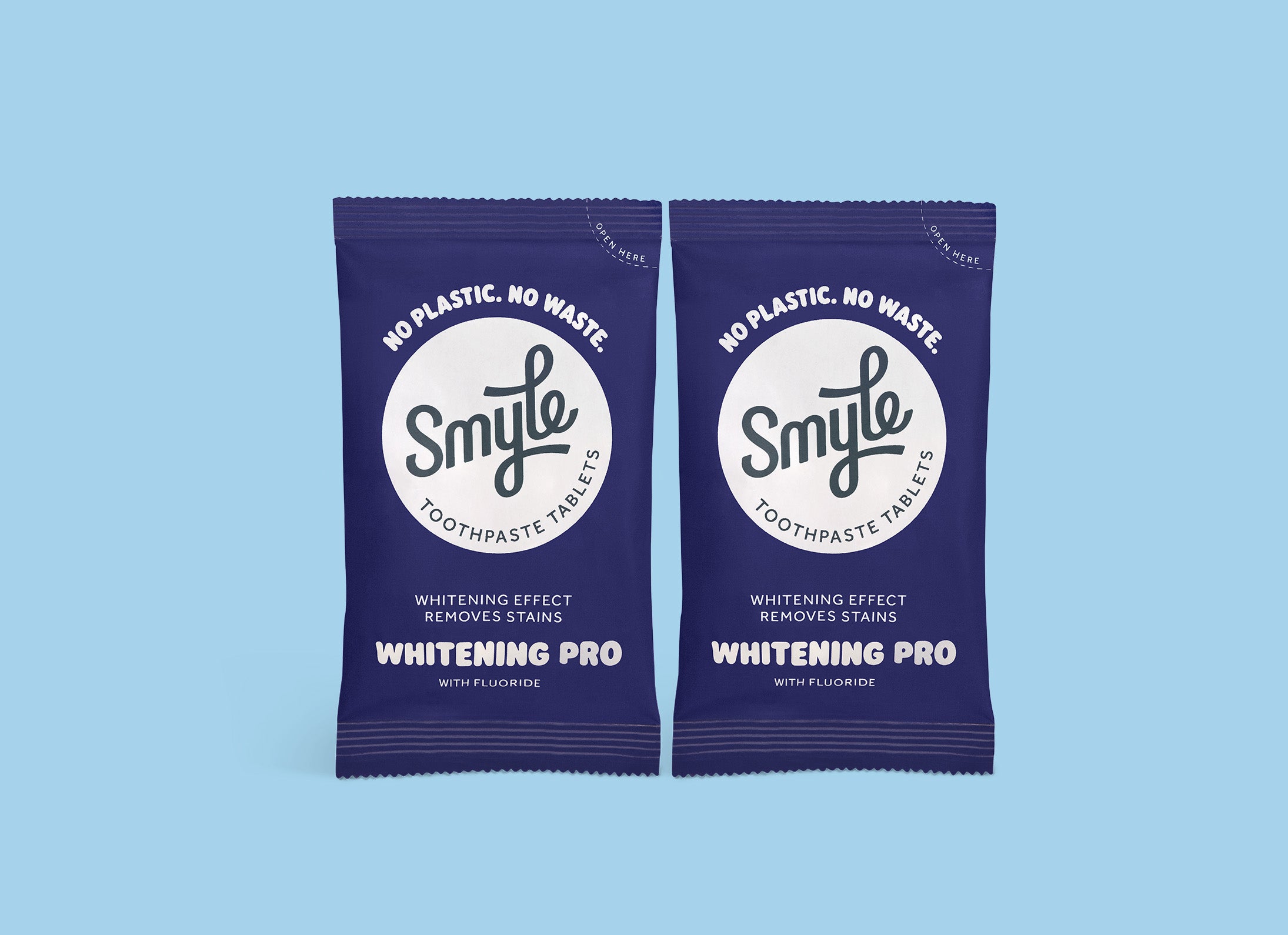
Are you attached to your beautiful smile? So are we! Many people have come to see a bright white smile as a kind of beauty ideal—and strive for it. That’s why whitening strips have become incredibly popular in recent years. These strips offer a simple and convenient way to brighten the color of your teeth and reduce surface stains. They provide an effective solution for anyone looking to improve their smile without undergoing expensive dental treatments or trying out strange DIY methods. Whether you’re looking for an affordable teeth whitening option or you’re just curious about the trend—we’re here to tell you everything you need to know!
What are whitening strips?
Whitening strips are thin, flexible strips specifically designed to whiten your teeth. They’ve become a popular choice for people striving for a bright, white smile. These strips come in various forms, but they all work based on the same principle. They’re coated with a gel that contains a bleaching agent—usually hydrogen peroxide or carbamide peroxide. When you place the strip on your teeth, the gel comes into contact with the tooth surface. The bleaching agent penetrates the teeth and breaks down the molecules responsible for discoloration. This process is called oxidation, and it helps reduce or eliminate stains and discoloration on your teeth.
The gel also contains other ingredients, such as binders and stabilizers, which help the strip adhere to your teeth and maintain the consistency of the gel. Some whitening strips also include ingredients to reduce sensitivity, such as potassium nitrate or fluoride. It’s important to check the ingredient list and discuss any allergies or sensitivities with your dentist before using the product.
The Benefits
Whitening strips offer several advantages:
- Convenience: They’re easy to use and can be applied at home, so you don’t need to book a dentist appointment or undergo special procedures.
- Affordability: This solution is generally more affordable than other professional whitening treatments, making it accessible to a wider audience.
- Gradual results: With regular use, these strips can deliver noticeable results over time. This allows you to brighten your smile gradually—without sudden changes.
- More confidence: Achieving a whiter smile can boost your self-confidence. A radiant smile can leave a great impression and help you feel good about your appearance. After using whitening strips, you might not be able to stop smiling!
Different types of whitening strips
There are various types available, with the two most common being over-the-counter whitening strips and professional whitening strips provided by dentists.
Over-the-counter whitening strips are widely available at drugstores and can be purchased without a prescription. They are relatively affordable and easy to access, making them a popular choice for many people looking to whiten their teeth. These strips are typically coated with a whitening gel that contains a low concentration of hydrogen peroxide and are applied to the teeth using a thin plastic strip. However, these over-the-counter whitening strips usually have a more limited strength and may deliver slower or less dramatic results compared to professional options.
Professional whitening strips, on the other hand, are typically offered by dentists or other dental professionals. These strips contain a higher concentration of bleaching agent and can deliver more effective and faster results. Professional versions are often custom-made for each patient, allowing for a better fit and more even application across the teeth. Since these strips are part of a professional treatment, dentists can also take extra precautions to minimize any sensitivity or side effects. While professional whitening strips are usually more expensive than over-the-counter options, they may be the right choice for people seeking fast, effective results—especially those with specific dental concerns that should be addressed under professional supervision.
Safety and Side Effects of Whitening Strips
Using whitening strips can be an effective way to achieve whiter teeth, but it’s important to keep certain safety measures in mind. First and foremost, it’s essential to carefully follow the manufacturer’s instructions. These guidelines usually indicate how long the strips should stay on your teeth and how often they should be used. Exceeding the recommended time or frequency can lead to unwanted side effects. One common issue is tooth sensitivity, where your teeth may become sensitive to hot or cold temperatures. This happens because whitening strips can temporarily open pores in the enamel, increasing sensitivity. Fortunately, in addition to regular toothpaste, there are also special toothpastes and mouthwashes available that are specifically designed to reduce sensitivity during and after use.
To minimize side effects, it’s also important to know when to stop using whitening strips. If you experience severe pain, inflammation (such as gingivitis), or other discomfort during or after use, it’s advisable to stop immediately and consult a dentist. A dentist can assess the situation and advise you on the appropriate steps to take.
How to use whitening strips
Using whitening strips correctly is key to achieving the desired results. Follow these step-by-step instructions to ensure you’re applying the strips properly:
Step 1
Brush your teeth thoroughly before applying the whitening strips. This ensures your teeth are clean and free from plaque or food particles.
Step 2
Open the packaging and take out the whitening strips. Make sure to identify the upper and lower strip, as they may have different shapes to fit your teeth correctly.
Step 3
Place the strip with the gel side against your teeth. Make sure the gel makes good contact with the surface of your teeth. Follow the instructions on the packaging for the recommended wear time.
Step 4
Keep the strips in place for the recommended time—usually between 30 minutes to an hour. Avoid eating, drinking, or smoking while wearing the strips.
Step 5
Remove the strips after the recommended time and discard them. Rinse your mouth thoroughly to remove any remaining gel.
Duration and Frequency of Use
The duration and frequency of whitening strip use can vary depending on the brand and strength. Always follow the instructions on the packaging, as some strips may require daily use for a certain period, while others can be used less frequently. Overuse can lead to tooth sensitivity, so be cautious and follow the recommended guidelines.
Extra Tips for Best Results
To achieve the best results when using whitening strips, here are a few additional tips:
- Stay consistent: Stick to the recommended duration and frequency of whitening strip use to achieve the desired results. Regular use is essential for a long-lasting whiter smile.
- Avoid colorants: While using whitening strips, it’s advisable to avoid foods and drinks that contain colorants, such as coffee, tea, red wine, and colored sodas. These can affect the results.
- Maintain good oral hygiene: Continue brushing, flossing, and rinsing with mouthwash according to recommended guidelines for general oral health. This helps keep your smile fresh and healthy while using whitening strips.
- Consult a dentist: If you have any questions about using whitening strips or experience tooth sensitivity, it’s a good idea to consult a dentist. They can advise you on the best approach and any specific care needed for your teeth.
By following these instructions and considering the tips, you can achieve the best results when using whitening strips and enjoy the radiant white smile you deserve.
Results and Effectiveness
Using whitening strips can lead to significant improvements in the color of your teeth. With regular use, whitening strips can typically make your teeth one to several shades whiter. The exact result may vary depending on the original color of your teeth and the specific whitening strip you are using. It’s important to have realistic expectations and understand that whitening strips cannot produce drastic color changes, as might be the case with professional dental treatments. The effectiveness of whitening strips can be influenced by several factors. First, consistency of use is crucial. Following the recommended instructions—such as the duration of wearing the strips and the frequency of use—can help achieve the best results. Additionally, individual differences in tooth structure and sensitivity can affect the effectiveness of the whitening strips. For example, some people may respond to the treatment more quickly and effectively than others.
By having realistic expectations, following consistent usage instructions, and maintaining good oral hygiene, you can enjoy long-lasting results from whitening strips and maintain your radiant smile. However, keep in mind that individual experiences may vary, and it’s advisable to consult a dentist if you have specific questions or concerns about achieving and maintaining your desired results.
Alternatives to Whitening Strips
There are several alternatives available for teeth whitening besides using these strips. Consider:
Professional Dental Treatments for Teeth Whitening
These treatments are performed by dentists and may involve the use of special bleaching gels, laser light, or custom bleaching trays. They often provide faster and more effective results, although they are typically more expensive.
Natural Methods to Whiten Teeth
This includes home remedies such as brushing your teeth with baking soda, rinsing your mouth with hydrogen peroxide, or rubbing your teeth with strawberries. While these methods are considered safe, their effectiveness is more limited.
Or, you can use a whitening toothpaste, of course!
Cost and Availability
Whitening strips are available in various price ranges, depending on the brand and quality. On average, the cost of whitening strips ranges from €20 to €50 for a set, which is usually enough for a complete treatment. It’s important to note that more expensive strips do not always guarantee better results. It’s advisable to do thorough research and read reviews before making a purchase. Whitening strips can be found at various retailers, such as drugstores, supermarkets, and online stores. However, it’s recommended to buy them from reputable stores or the manufacturer’s official website to ensure you receive authentic and safe products. When choosing whitening strips based on cost and availability, you should also consider your individual needs and the desired results. Some strips are designed for sensitive teeth, while others have a stronger formula for faster results. It’s important to consider your goals and any dental conditions before making a decision.
Frequently Asked Questions
How long does it take to see results after using whitening strips?
It’s important to know that results can vary depending on the brand and formula of the whitening strips, as well as the individual characteristics of your teeth. Generally, you can expect noticeable results after a few applications. However, for optimal results, it’s advisable to follow the recommended treatment duration, usually between 7 and 14 days.
Are whitening strips safe for my teeth?
Whitening strips intended for at-home use are generally considered safe when used correctly. We can’t stress this enough: it’s really important to follow the manufacturer’s instructions carefully and not exceed the recommended treatment time. Overuse of whitening strips can lead to tooth sensitivity and gum irritation. If you have any doubts or dental issues, it’s advisable to consult a dentist for advice.
Can I use whitening strips if I have sensitive teeth?
Many strips are specifically designed for people with sensitive teeth and contain ingredients to reduce sensitivity. It’s advisable to be cautious and discuss any discomfort or increased sensitivity during the use of whitening strips with your dentist. The dentist can then advise you on the best options for your specific situation.
Are whitening strips permanently effective?
Whitening strips can provide temporary results, and the longevity of the results depends on several factors, such as your eating and drinking habits, oral hygiene, and lifestyle. Over time, teeth may become discolored again due to factors like consuming coffee, tea, red wine, and tobacco. To maintain results longer, regular cleaning and avoiding stain-causing substances are important.
Whitening Strips for a Radiant Smile
With a wide range of options available and the ability to whiten your teeth in the comfort of your own home, whitening strips have become a popular choice for those striving for a radiant smile. By considering factors such as average cost, where to buy them, tooth sensitivity, and desired results, you can find the whitening strips that work best for you. Don’t forget to take precautions and minimize side effects by carefully following the instructions. Whether you choose whitening strips, professional treatments, or natural methods and products, the most important thing is to maintain good oral hygiene and take care of your teeth’s health. With the right knowledge and approach, you can enjoy a radiant smile that boosts your confidence!










































